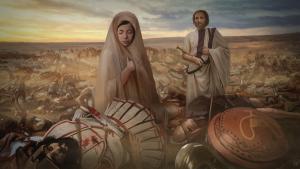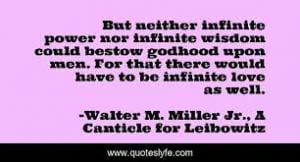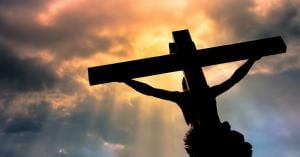On David Tracy’s Fragments, Chapter Three

Suffering and tragedy has been an important theme for David Tracy’s theology for a long time. It appears in many places in Fragments and in the titles of two chapters. The chapter presently under consideration intensifies the idea of suffering with the addition of “horror.” The Christian response waits for Chapter Four. In Chapter Three, “Responses to Horror and Suffering,” Tracy considers the human, pre- or extra-revelation responses to suffering and horror. He finds such responses in some Eastern religions, but he devotes most of the chapter to ancient Greek tragedy.
Suffering and horror, essential themes for theology
The horrors of the twentieth century made the optimism, the belief in inevitable progress, of the nineteenth century, philosophically and theologically untenable. (Unfortunately, in many ways that naïve belief is still with us.) Religions and theologies have always dealt with suffering, but the excessive horrors of the last hundred years require a rethinking of traditional, too complacent answers. Phrases like “God’s mysterious plan” and “reward in heaven” have an empty, hollow sound today.
A second factor demanding rethinking is the growing realization of our place in the natural world. Modern technology brings into our homes pictures of a world suffering the ravages of nature—tsunamis, droughts, earthquakes. We can no longer say simply that suffering is the result of sin. (p. 84)
Human-caused horror is, of course all too common. Tracy names “the Shoah [Holocaust], the Middle Passage [trans-Atlantic slave trade], the Trail of Tears, the Gulag.” (p. 57) I think of the horror of nuclear Armageddon.
In addition, we have come to know how human and natural causes combine, as in:
…the Great Hunger in Ireland, a famine whose horror was increased by an indifferent English government toward an oppressed colony.” (p. 57-58)
Climate change and the worst pandemic since 1918 are two more obvious examples of how nature teams up with sin and human error with dire consequences.
“An adequate intellectual response” to horror and suffering, Tracy says, “may not finally be possible.” (59) Is innocent suffering really “all for the best” in God’s mysterious plan? One would think twice about allying with such a God. Taking the Cross seriously means abandoning all such easy sentimentalism and looking directly at tragedy itself.
The religions’ response to horror
World religions generally propose some vision and way of life in response to both the basic goodness and the horror of life. (p. 61) Tracy’s treatment of these non-Christian religions is brief, barely two pages. Buddhism and Hinduism have discovered a cause of suffering they call “primal ignorance.” This ignorance is not the sort of thing that more accurate thinking could wipe away. It infects all consciousness,
…far more like the unconscious, but systematically functioning distortions (sexism, racism, classism, colonialism, anti-Semitism, Islamophobia, homophobia) exposed by critical theories than like the temporary ignorance and conscious errors removable by better reasoning. (p. 61)
Tracy sees a resemblance to a proper Christian understanding of sin,
not as moral errors (sins) but as a fundamental disorientation of the ego unable to escape its own self-centeredness. (p. 61)
Most religions then offer some hope (“not optimism”). It may be the quiet serenity of the mystics of all traditions or the loud demands of activists and prophets. Tracy thinks that, either way, the “symbolic vision of the Good” of these religions “deserves the serious attention of believers and non-believers alike.” (p. 61-62)
For most religions (Tracy instances Pure Land Buddhism) only a “benign Other-Power” can free the self from its horror. For many that “Other-Power” acts in tandem with Self-Power as grace operates through human freedom. Zen Buddhists counsel letting go of the ego, no more grasping at false ultimates, “including, for Buddhists, the biblical and Qur’anic God.” The ultimate reality, a gently attracting Void, is a horror for us only when we cling to our false egos. For the “awake” one, the void is
fully positive, enhancing , and liberating for those willing to let go to it. For most religions ultimate reality is trustworthy. (p. 62-63)
The classical Western response to horror in Greek tragedy
Tracy credits the Greek tragedians with “the most persuasive response in the history of the West to horrors and Horror.” By contrast, there is tragedy, that is tragic “fragments,” in the Hebrew Bible, but they are “set in a basically nontragic text.” (p. 63)
Likewise Christianity is not ultimately tragic, but it contains tragic elements. You see them in the Gospel of Mark’s emphasis on the cross, in African American gospel music, and in the Christianity of oppressed peoples. All of these express the tragic circumstances of whole peoples. That’s a dimension that’s missing, Tracy says, in theologies of the powerful. They only see tragedy as affecting suffering individuals. These would include, I suppose, the damned in hell, but I doubt that the eternally lost fit under Tracy’s concept of tragic individuals.
Defining a tragic vision
Tracy identifies four basic elements of a tragic vision:
- Radical experience of horror
- A sense of necessity
- Intense suffering resulting from that necessity
- Some human response to that suffering and that horror
The tragic vision is about both the world and the person who suffers a tragedy. Suffering, even in the extreme, does not by itself make a tragic figure. In this section Tracy spends most time on numbers 2 and 4 above—the kind of world the tragic figure faces and the kind of response he or she is able to give.
What kinds of necessary things does the world present to us? Fate looms large in the ancient world view. For moderns it’s more likely chance. But chance is like fate in that it’s something you have to deal with. As an American male, I have a one in sixty chance of developing pancreatic cancer. That’s far from a necessity, but once that sort of thing happens, it necessarily did happen. It’s a “contingent necessity” in Tracy’s view. I didn’t have to be born, but
… once born, we have each become a contingent necessity for the brief time allotted to us…. Each of us exists as born into a particular family, gender, culture, language, moment, history, and society.
All of these are part of our contingent necessities, the things that make us who we are and that we can’t avoid. (p. 71-72)
Whether fate or chance, Tracy says theology must take this sort of thing seriously. Christians often speak of providence as God’s alternative to fate. But is it providence that decrees that some children are born to luxury and some to dire poverty in the midst of drug wars? Whatever providence is, it does not eliminate tragedy and the need for a tragic vision even in Christianity.
Hope in the face of tragedy
Like Buddhism, Tracy says, tragedy ignores the “Why” question and response to suffering. It describes suffering, as exactly and passionately as possible.
Tragedy is not so much an answer to the question of suffering as it is an intensification of the question. (P. 73)
Still, Tracy says, half of the classic Greek tragedies end with some kind of hope. (p. 68) That hope is found in the fourth element of the tragic vision—the personal response.
Hope is not always a matter of getting out of or overcoming a tragic situation. The gods may be too cruel, if they even exist. Then, so we read in Euripedes, human compassion among fellow sufferers, who are not as cruel as the gods, may be the only hope. Closer to the tragic views one finds in the Bible is the more hopeful Aeschylus. He advises alliance with the gods of wisdom and with Zeus, who is ultimately just. (p. 77) Sophocles – Tracy calls him “the incomparable” – is sometimes hopeful, sometimes not. Here, I suspect, is where Tracy’s theology really goes to work in relation to the Greek tragedy.
A bitter taste of the infinite in the tragic figure
I think Tracy’s favorite tragic figure is Sophocles’s Antigone, with Oedipus as a close second. Both figures tread in the space between the human and the divine. Both transgress the human measure—not in knowledge or strength or any measurable quantity. Not even in cleverness, which, I suppose, is impossible to measure but which can be compared. Brer Rabbit is cleverer than Brer Bear and Brer Fox. A Sophoclean tragic figure is not a superhero or even necessarily superior.
Each tragic figure is “larger than life” in his or her own way, which one would never attempt to compare with another. If ultimate reality is infinite, that infinity can’t be simply infinitely more of the things we know in finite reality. (I wrote about God’s infinity in this recent post.) If God is infinitely powerful, it must be a different sort of thing from the power which we humans can measure. We blithely speak of, but can’t define, the power of love.
I suspect it’s love of some sort driving the tragic figure to an extreme, which results in disaster for her or him. We admire Oedipus’s “need” to discover the truth of his origin, regardless of the consequences. Equally admirable is whatever drives Antigone to bury her traitor brother in defiance of the law of the city. She must obey the higher law of the gods, to her own peril.
By attending to such stories of transgressing human limits, Sophocles (in Tracy’s view) thinks that people get a “glimpse” (only that much) into what they normally avood, their limit questions:
Despite all human evil and suffering, is Zeus ultimately just? Is human life—finite, measured, mortal—ultimately meaningful? Or is it all finally meaningless and absurd? (p. 80)
Transgressing the limits in real life: Oscar Romero
Sophocles doesn’t answer any of these questions. In fact, he’s “not at all sure that Zeus is just.” (p. 80) Tracy doesn’t answer them, either, not here anyway. I can’t help thinking how similar, and different in important ways, a real-life hero, a martyred bishop of El Salvador, is to the tragic figure of Antigone.
The day before the unavoidable machinery of the state murdered him, Oscar Romero preached disobedience to the law of the regime. He begged soldiers not to obey orders to kill peasants resisting an oppressive government. The next day he suffered Antigone’s fate, and for nearly the same reason.
But Romero was not a tragic figure. His experience was not one of necessity, driving him on to his fate. It was an overflow of love, freely given for his people. And the lesson of the story is not just the ambiguous hope of seeing a hero die out of love. It is the living testimony to hope of the thousands who gathered to honor the saint at his funeral and continued the struggle for justice in El Salvador. They also tell us about the nature of tragic, but still beautiful, reality.
Image credit: The Athenian Inspector












